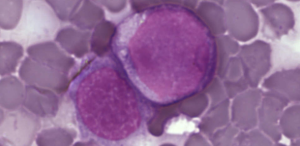
21 October 2015 – A few years ago I was given the opportunity to work with and learn about IBM Watson. At its simplest, Watson is a cognitive system enabling a new partnership between people and computers. Watson solutions and applications have the ability to transform industries, including healthcare, finance, government, law and retail. I have been most involved in its applications in healthcare and medicine.
The reason was personal. My Mom died 11 years ago, suffering from a decaying heart muscle that would debilitate her in her later years and that was the catalyst to her eventual death. We did not realize how sick Mom was in her final years. Her life had become difficult. She had moved from New York to Rhode Island (traumatic for a woman her age) to be close to my sister and her grandchildren, and she had increasing health problems, she did not like where she had “arrived” at this stage of her life — and so it seemed she wanted to make all our lives difficult: complaining, criticizing, scolding. But it was a complex overlay of health and emotional issues.
She had a heart operation and there were complications due to extreme negligence by nurses in her post-operative treatment. I immersed myself in issues of cardiovascular disorders, hematology, rheumatology, etc. Having been a pre-med student waaaaaaaaaaay back when, it rekindled my interest in medicine. It led to my decision to enroll in a neuroscience program at the University of Cambridge.
I have been most impressed with the use of Watson in DNA sequencing to treat cancer patients. For instance, The Genome Institute at Washington University in the U.S. uses Watson artificial intelligence system to compare patients’ genetic data with databases of cancer genes and every scientific paper published about cancer genetics. What takes a team of experts hours or days can be accomplished in minutes.
Without going into too much science, what you are analyzing is tumor suppressor genes which are genes that protect cells from becoming a cancer. They may put the brakes on accelerated growth, or initiate cell death when DNA damage is detected. Therefore, the low expression of tumor suppression genes can lead to cancer.
This work has brought me in contact with a wealth of technologies devoted to early diagnosis, treatment, and palliation of cancer, both experimental and theoretical investigations.
So I was delighted to learn that scientists at University of Cambridge were part of a team that have taken advantage of revolutionary developments in microscopic imaging to reveal the origins of leukaemia. It is a brilliant story that will lead to new, more targeted, treatments. For a summary click here.